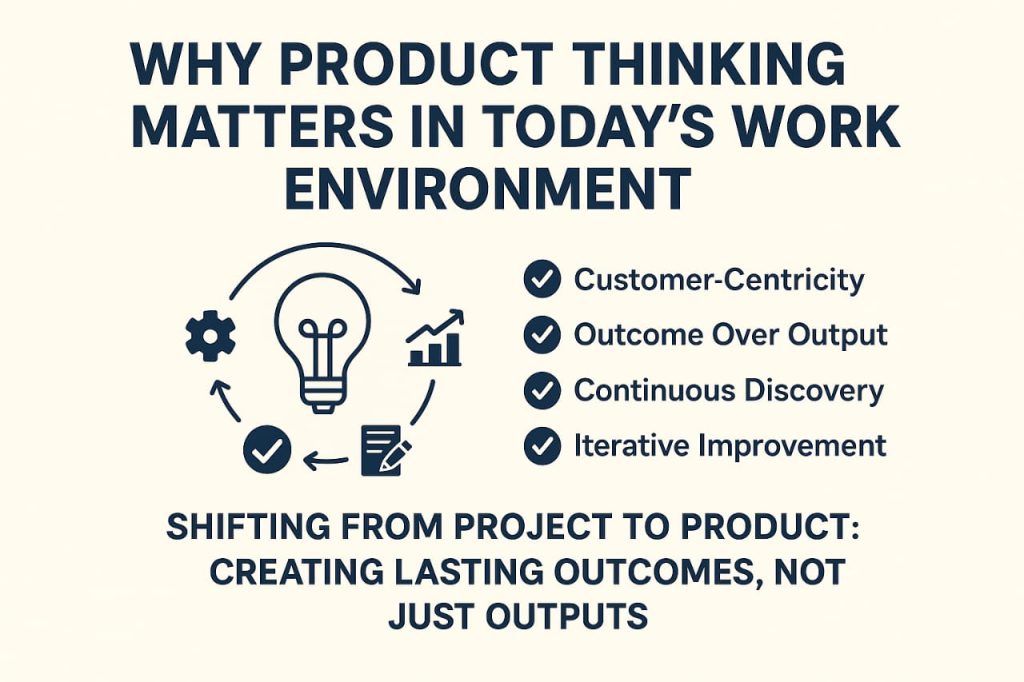In many organizations, work is still approached through a project lens—a clear start date, a defined scope, and an end date. Projects are time-boxed, and once they conclude, teams disband, and focus shifts to the next initiative. While this approach can deliver outputs, it often leaves products behind as “orphans”—without ongoing care, strategy, or improvement.
This is where product thinking comes in.
What is Product Thinking?
Product thinking is a mindset of focusing not only on delivering outputs, but on creating outcomes that provide enduring value for customers, stakeholders, and the business. It’s about asking:
Who are we building this for?
What problem are we solving?
How will we know if it’s successful?
What happens after the first release?
In other words, product thinking emphasizes the full lifecycle of a product—from conception to growth, evolution, and retirement.
The Principles of Product Thinking
- Customer-Centricity
Always start with the user. Understand their needs, pain points, and aspirations before deciding what to build. - Outcome Over Output
Success is measured by the value delivered and the impact created, not just the number of features released. - Continuous Discovery
Constantly seek feedback, test assumptions, and validate ideas through experimentation. - Iterative Improvement
Products evolve. Deliver value early, learn from results, and refine continuously. - Long-Term Stewardship
Products don’t end when a project does. Plan for growth, maintenance, and eventual retirement. - Strategic Alignment
Every product decision should connect to the organization’s broader mission and strategy.
Why It Matters
- ustainability – Products live on after a project ends. Without ongoing care, they lose relevance.
- Customer Value – Product thinking ensures decisions are anchored in user needs, not just deadlines.
- Innovation – A product mindset fosters continuous improvement, rather than stopping once the project ends.
- Business Growth – Products that continuously evolve drive long-term success and competitive advantage.
Scrum and Product Thinking
Scrum embodies these principles. The role of the Product Owner exists to maximize product value, ensuring that the team isn’t just finishing work, but creating meaningful outcomes. By encouraging adaptation, customer feedback, and iterative delivery, Scrum keeps the product relevant and valuable throughout its lifecycle.
Shifting from Project to Product
Even in project-heavy environments, organizations can benefit by encouraging everyone to adopt product thinking. This means:
Looking beyond deadlines and asking what’s next for the product.
Measuring success by customer outcomes, not just project completion.
Building a culture of learning, feedback, and adaptation.
Final Thoughts
Product thinking is not about discarding projects—it’s about ensuring every project contributes to the long-term health and success of the product. By embracing its principles, organizations shift from merely delivering outputs to creating lasting outcomes that matter.
To learn more about Scrum Master Certification in Lagos, Agile Expert, Project Management, Product Owner, Lean Six-sigma Green belt, Lean Six-sigma Black belts, OKRs, Business Analysis, Kanban SMC, PSM and CSM, kindly visit scrumconsult.com

